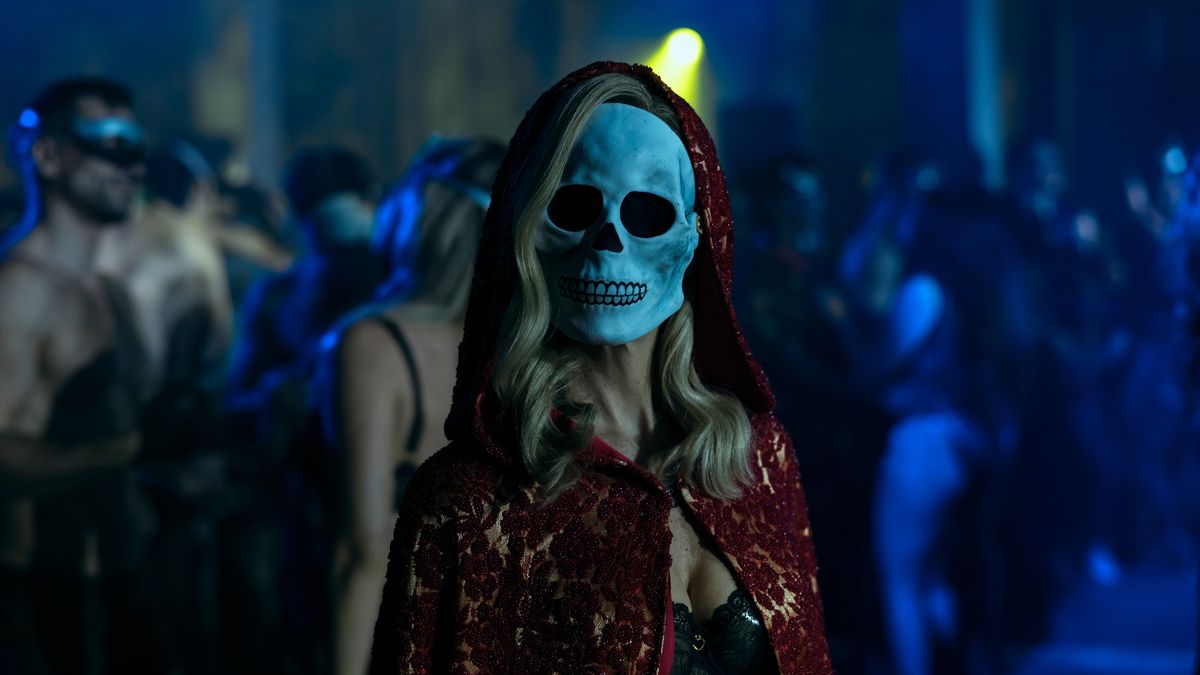It’s almost Halloween, which means its time to cancel all your plans, staple your curtains shut and sit down with a new pitch-black comedy-horror series.
We are talking, of course, about The Fall Of The House Of Usher. Hitting Netflix today, it's directed by Mike Flanagan, who's responsible for some of the platform's other big horror-hitters, like The Haunting Of Hill House, Midnight Mass and The Midnight Club).
Here's a bit of background to the much-hyped project.
What’s the big idea?
According to the official synopsis: “Ruthless siblings Roderick and Madeline Usher have built Fortunato Pharmaceuticals into an empire of wealth, privilege and power. But past secrets come to light when the heirs to the Usher dynasty start dying at the hands of a mysterious woman from their youth.”
That pill at the centre of the story is a fictional opioid called Ligodone, which makes it a timely production. We've currently in the thick of a Big Pharma drama boom, especially when it comes to shows, such as Dopesick and Painkiller, that address the devastating spread of opioid addiction and deaths in America, and the companies at fault for it. Other explorations of the topic can be seen in recent films and documentaries, many of which have been released in the past five years.
Where does the story take inspiration from?
The Netflix series borrows heavily from a short story by the American writer, Edgar Allan Poe.
The gothic novella was first published in 1839 by Burton's Gentleman's Magazine, and follows Roderick and Madeline Usher.
In the story, an unnamed narrator receives a letter from an old childhood friend, Roderick, who asks him to visit his house, as he is ill. When the friend arrives, he finds that Roderick’s sister, Madeline, is also ill – falling into trances — and he notices that there is a little crack by the roof of their house.
As the narrator stays in the house to cheer up the siblings, things take a turn for the worst: Roderick tells him that he believes the house is alive, and then Madeline dies. While Roderick fears that her body will be taken for medical dissection, he asks the narrator to help entomb her in the family grave in the house. However, the narrator also notes that she has “rosy cheeks” on her death.
The two men find themselves in a great state of unrest and mental breakdown. Then the storm begins, lighting up the lake next to the house. On telling a story of a knight and a dragon, the house also begins cracking up, literally, and a litany of strange sounds can be heard. It turns out that Madeline has been entombed alive, and many of the noises were her. She escapes, and scares her brother to death, before dying herself. As the narrator runs away, he turns to watch the house, only to see it split into two and fall into the lake.
Is the Poe story based on any real events?
It’s believed that Poe was inspired by a real-life building, the Hezekiah Usher House on an estate in Boston, Massachusetts.
According to some sources, the estate owner walked in on a sailor and his wife together at his property, and reacted by entombing them within it. “When the Usher House was torn down in 1830, two bodies were found embraced in a cavity in the cellar”, reported the Boston Lyric Opera, however the publication also notes that this was likely to be “just a rumour”.
Meanwhile, others have noted that Poe’s story has many similarities with the German writer E.T.A. Hoffmann, who wrote Das Majorat in 1819 and was known to Poe. His story also includes the breaking down of a house, eerie sounds in the night, the story within a story. The house owner is called Roderich (or Roderick), too.
The Fall Of The House Of Usher is out on Netflix from October 12.













